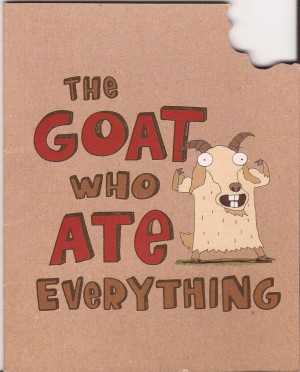Do Your Blog Posts Need A Story Structure?

The Rise Of Creative Content
 Fiction writers love to talk about story structure. Whether you favor the eight-point arc or the snowflake method, one thing is for sure: Every story has a structure.
Fiction writers love to talk about story structure. Whether you favor the eight-point arc or the snowflake method, one thing is for sure: Every story has a structure.
You might as well call it narrative structure because no matter what kind of narrative you are writing – be it fiction, a narrative poem, an essay, or a blog post – there is a structure. Whether you plan it or not. Just ask Chuck Wendig.
Since your blog posts have structure, why not put forth a little extra energy in the beginning and plan that structure? Don’t let it happen by accident.
Would You Cook A Meal By Accident?
Every blog post is really a story. It can be a 20,000-word tome (would you read that freaking thing?) or it can be a 300-word anal dropping. Either way, your goal is to attract readers and hold them on the edge of their seats. To do that well, you need to keep it focused.
I’ve got a question for you: Would you cook a meal by accident?
Seriously. Walk into the kitchen right now and just throw a bunch of things in the frying pan. Whatever you see. See what comes out of it.
There’s a show that my wife and I like to watch called Chopped. Four contestants get a basket of mystery ingredients (usually, they are obscure ingredients that I’ve never heard of) and the task is to create a meal that is better than the other three contestants’. It goes in three rounds (appetizer, main course, and dessert) with a different basket of ingredients for each round. Oh, and they race against the clock.
Here’s the deal. They don’t have time to plan a meal. They have to think fast and create a meal on the fly using the ingredients in the basket. It’s improv cooking.
Still, despite the challenges and the built-in obstacles thrown at these working chefs, they always have a structure. Good chefs know how to put flavors together from unexpected ingredients, and good writers have to be able to do the same thing. Hopefully, you have more time to plan your blog posts than a few minutes, but if you don’t, you can still create a structured blog post from scratch if you employ three things:
- Your knowledge of the craft
- Your experience in the writer’s kitchen
- The ingredients in your blogging basket
Improv Is Not Lack Of Structure
If you’ve ever watched “Whose Line Is It Anyway?,” then you know it’s completely based on improvisational comedy skits. Three comedians get an idea tossed at them from the show’s host, Aisha Tyler (formerly Drew Carey), and they must produce a skit off-the-cuff. It takes real talent to pull that off. And structure.
Just like a good comic has a handle on his art such that he can pull a joke out of his ass on the spur of the moment and make you laugh, a good writer must have an understanding of narrative structure before he starts punching the keyboard. You don’t have to know the exact structure you’ll use in every circumstance, but you should be familiar enough with your craft that you can kick out a blog post on any topic and give it structure as you write it. If you can do that, you’re a blogger.
How To Determine Your Narrative Structure
Do you understand the elements that make up a good blog post? I’m not just talking about h1 and h2 tags, or titles and subtitles. Those are necessary, to be sure, but that’s not what I’m talking about.
Let’s say you want to write a how-to blog post to help your readers understand a particular topic from A to Z. You title your post, “How To Eat Chicken.” You’ve done your research and you’ve discovered that your readers really want to know how to eat frickin’ chicken. Writing that blog post would require a different structure than a blog post titled “Why Chicken Must Be Eaten.”
The difference is that one is instructive while the other is philosophical. Maybe even theoretical.
I could have titled this blog post “How To Structure Your Blog Posts,” but my intent was not to write a how-to post. Rather, I wanted to answer a particular question that some readers might have about structuring blog posts. Therefore, I opted for something more rhetorical.
So what’s the point? In a nutshell, your blog post structure is intrinsically tied to the intent of your narrative. What do you want to say?
If you start with what you want to say – the specific message you wish to convey to your audience – then how you say it will be limited by the ingredients you’ve placed in your own basket. It’s a great way to force yourself into a particular narrative structure when you aren’t sure what you want to write about.
Consider Your Audience
On Chopped, there is one judge who hates raw onions. Every time a contestant uses raw onions in their dish, he mentions it. And I always think the same thought, “Don’t these contestants watch the show, and do they know who the judges are before they start cooking?”
If the answer to both of those questions is yes, then why are they using raw onions?
They’re not considering their audience.
Your story structure may or may not have anything to do with your audience, per se. But a particular blog post might be geared toward one audience more effectively using a certain structure and another audience with an entirely different structure.
For instance, if you’re writing to a retail audience that consists of store managers, corporate CEOs, and purchasing agents, those are three different audiences. Their needs are going to be different. Therefore, a discussion on merchandising might take on a different structure based on the needs of your audience.
Let The Story Dictate
Your blog is a narrative. Each blog post is its own narrative, a story within a story.
When I was younger, I frequently attended a fiction writing workshop. One participant, after reading some of my work, asked me, “Why don’t you let the story write itself?”
To non-writers, that might sound like a strange statement. But it was actually quite astute. My friend knew that once you start a story, then the characters in that story and the dramatic events of the narrative have a tendency to push the story in a certain direction. Once you determine that your protagonist is a doctor, you can’t have him working on cars throughout the story unless there is a good explanation (maybe his hobby is restoring old Fords).
By the same token, you can keep your blog posts focused by letting them dictate your narrative structure. You don’t want your blog posts attempting to cover every topic under the sun.
So, here’s a short down-and-dirty for how to keep your blog post structure tight and on target:
- Pick a tightly-focused topic within your niche
- Focus your topic on a specific need of a well-defined audience
- Give your story legs, long or short, to walk on its own
If it helps to write an outline before you start writing, do it. But you don’t have to be a slave to the outline. Let the narrative decide.
Contact me through my contact form or
Call 717-253-2306

